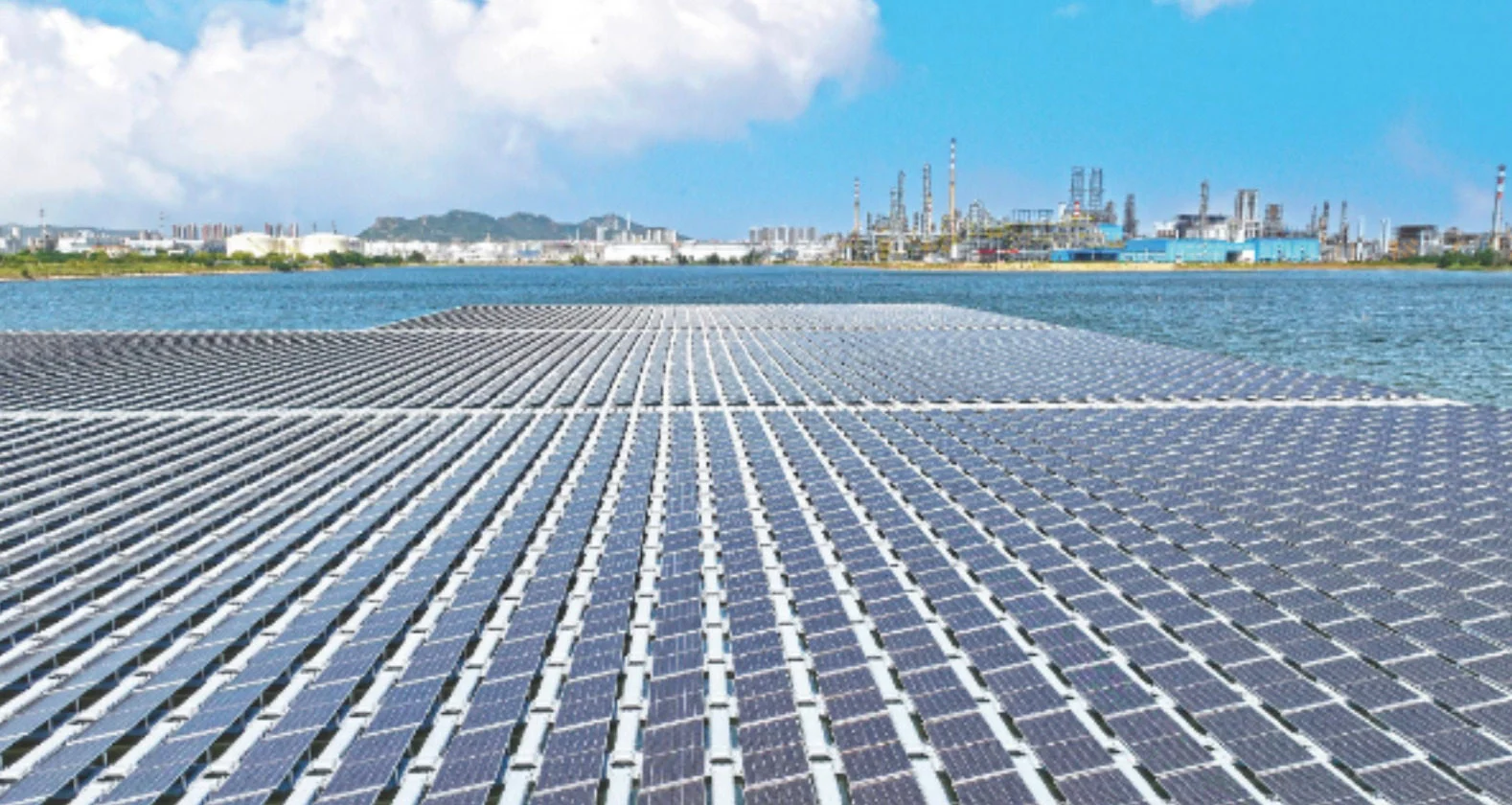By June Xia
China has launched a fully seawater-based solar energy system – the first of its kind suitable for industrial use and large-scale power production – as part of broader efforts to expand renewables in coastal regions, boost the maritime economy and drive industrial innovation.
Located in Qingdao, Shandong province, the floating solar station builds upon another offshore photovoltaic power generation project launched in late May. Together, they form the largest initiative of its kind by Sinopec, one of China’s biggest state-owned companies.
According to the State Council’s information website, the two projects could generate a combined 16.7 million kilowatt-hours of electricity annually, cutting carbon dioxide emissions by 14,000 tonnes.
The floating power station, built in coastal waters by Sinopec Qingdao Refining & Chemical, spans about 60,000 square meters and has an installed capacity of 7.5 megawatts. The solar panels rise and fall with the tide, generating energy from the ocean’s surface. Their proximity to the water boosts efficiency by 5 to 8 per cent, according to the site.
The project is part of Beijing’s broader strategy to reduce dependence on imported fuels and shift to home-grown renewables. In 2020, the government set a target of more than 1.2 billion kilowatts of installed wind and solar capacity by 2030.
Beijing views emerging industries such as photovoltaic energy as essential to developing “new quality productive forces” – a growth model centred on technological breakthroughs and industrial upgrades, repeatedly mentioned by President Xi Jinping.
“Scientific and technological innovation is the core element in developing new quality productive forces. Green development is the foundation of high-quality development, and new quality productive forces are inherently green productive forces,” Xi said in April last year.
As the world’s largest manufacturer and consumer of photovoltaic products, China dominates the global industry.
According to the National Energy Administration, solar power now accounts for 30 per cent of the country’s total installed capacity, making up nearly half of the global total as of the end of May.
But after years of rapid expansion, the sector faces growing overcapacity risks, prompting a shift in the industry towards technological innovation and upgrades.
China’s western regions have long served as the country’s solar energy powerhouses, but challenging terrain and long transmission distances have spurred the push to explore offshore and other alternatives.
In January 2025, Shandong also completed the nation’s largest single-unit photovoltaic power generation station on salt-alkali mudflats along the coast, which is expected to generate 1.442 billion kilowatt-hours of electricity annually once operational.
